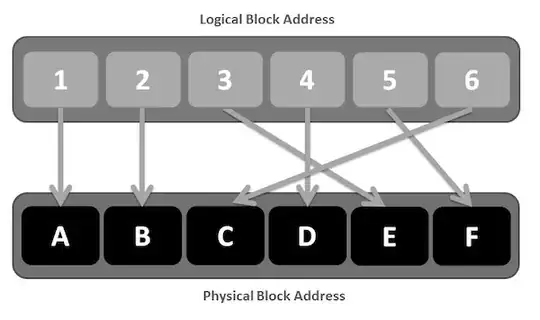In general, how efficient a USB flash drive is comes down to amount of over-provisioned space since these don't support TRIM like protocols. The less of it, the more you'll observe behavior that you described.
First we need to understand USB Flash Drives can dynamically map LBA blocks or sectors we write to, to physical NAND blocks.

Then we need to understand NAND can perform 3 basic operations being read, write and erase.
And finally we need to understand that NAND can only store new data in erased blocks and that erasing is the slowest of the three basic operations.
With absence of TRIM like protocol, the only way a flash drive will know it can erase space, is by user writing data to an already mapped LBA block. Again, note that we can only write to erased blocks.
Preferably, rather than erasing the physical block that is mapped to LBA 100 if we write to that, the USB flash drive simply maps an already erased block to LBA 100 and uses that to store the data because the latter is quicker.
The previous block that was mapped to LBA is not sort of in an 'in between state', it is not yet erased but also no longer contains 'valid' data. It's waiting for what's called the garbage collector to erase the block. Once it is erased it can be used again.
Now back to over-provisioning ..
If we consider the extreme, being no overprovisioned space then as soon as every LBA block is mapped to physical NAND, writing anything new to a drive requires the drive to erase the space mapped to the LBA block we're writing to before it can write new data.
Since low level format = zero fill (is actually writing data, whether this is actual data or just zeros is irrelevant), as far as the USB flash drive is concerned all LBA space is mapped to physical NAND blocks (I am over simplifying here, but the idea is correct). So in this extreme scenario (no overprovisioned space) each write now requires a slow erase cycle even if at file system level the low level formatted drive is considered empty.
Now in reality such a drive will soon fail like we see with ultra cheap or even free promotional USB flash drives.
USB flash drives with some overprovisioning will do slightly better but will at some point run into their limits. The more overprovisioning, the better it will perform unless you write data fast enough and plenty enough to saturate the amount of over-provisioned space. The reason for this is simple:
Presence of over-provisioned space means that by definition we always have some non-mapped space which the drive can erase and have at the ready to write new data to. Only if we write fast enough and plenty enough, at some point the drive can not keep up erasing non mapped blocks. The more over-provisioning the longer we can push that moment ahead of us.
Note: the answers in question that is linked as duplicate aren't incorrect but none of those address this fundamental issue as far as I can tell.
